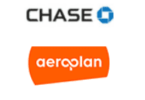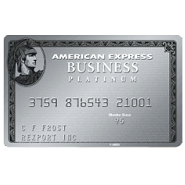Hot on the heels of my post analyzing the 50% Airline Bonus for the American Express Business Platinum, I’d like to delve into the Arrival+ and a common misconception: that the card earns 2.1x miles on all purchases due to the 5% rebate on miles when you redeem points.
The Arrival+’s signup bonus is still quite good, but the Arrival+ is in no way worth keeping as a daily driver, as it presents a truly abysmal value compared to a 2% card.
This post tends towards very math-y. However, you can skip all the math and get some good mileage out of the optimal breakpoints tables if you’re an Arrival+ cardholder.
Contents
How does redemption work?
In order to redeem your points at 1 cpp, you must redeem a minimum of 10,000 miles against a charge that codes as travel and is at least $100. Any redemption over 10,000 miles must be in increments of 5,000 miles, or a full charge’s value in miles ($211.46 charge = 21,146 miles). Note that I am disregarding, for convenience’s sake, the effect of additional minimum redemption thresholds greater than 10,000 miles, which would really hurt you. Because you get a 5% rebate on miles redeemed, the card is often quoted as earning 2.1x miles on every purchase.
Where’s the 2.1x?
Since we want to determine the earn rate of the Arrival+ for every day use, we will disregard the signup bonus.
Starting at a balance of 0 points, you put exactly $28,000 dollars on your Arrival+ in 6 months, and earn 56,000 points.
As discussed at Loophole Travel, there’s a bit of a calculation involved to obtain the optimal redemption because you are getting 5% of your redemption back and you need at least 10,000 miles to redeem again. It depends on whether you are (a) cashing out your balance on existing charges or (b) adding new travel charges to cash out your balance.
(a) To achieve optimal redemption, {Total Balance} – {Redeemed Balance} + 0.05 * {Redeemed Balance} = 10,000, which re-arranges to: rounded down, redeem ({Total Balance} – 10,000) / 0.95 miles.
(b) To achieve optimal redemption, {Total Balance} – {Redeemed Balance} + 0.05 * {Redeemed Balance} + 2 * {Future Purchase} = 10,000, which re-arranges to: rounded down, redeem ({Total Balance} – 10,000 + 2 * {Future Purchase}) / 0.95 miles.
Let’s assume option (a) is possible with your 56,000 miles, as you recently made a $500.30 travel purchase. 46,000 miles / 0.95 means you would want to redeem 48,421 miles to be left with exactly 10,000 miles. Alas, the strictures of the Arrival+ redemption program prevent you from doing so because you must redeem in increments of 5,000 miles if not covering the full value of a charge. You instead redeem 45,000 miles, leaving 11,000 miles in your account and getting a redemption bonus of 2,250 miles—a total of 13,250 miles left. You can now either spend $875 and redeem 15,000 miles or redeem 10,000 miles.
As spending $875 presents the best earning option, you does so: you’ve spent $28,875 on the card, redeemed 60,000 miles against $600 in travel charges, and have 750 miles in your account. You’ve done about as well as possible and earned $600 / $28,875 = 2.0779% cash back. Because the balance is so low, I have valued the 750 miles at $0 (you need 5,000 miles to redeem miles at 0.5 for a cash back statement credit).
If you don’t choose to spend another $875, however, and redeem 10,000 of your 13,250 miles, you’ve has spent $28,000, redeemed 55,000 miles against $550 in travel charges, and have 3,750 miles in your account. Even counting the 3,750 at 0.5 cpp (as it is close to the 5,000 mile redemption mark for a 0.5 cpp cash back credit), you’ve done remarkably poorly and only earned $568.75 / $28,000 = 2.03125% cash back. (if you take out the 0.5 cpp valuation of the miles currently in your account, you’ve only earned 1.9643% cash back. yikes!).
Optimal breakpoints
Naturally, the next question is what point values in your account are “optimal”, in the sense that you should be able to redeem them for maximum cash back (nearest 2.1%) without spending additional money. Thus, we define maximum cash back as an initial balance from which you can redeem integer multiples of 5,000 miles and wind up with 10,000 miles left. As it turns out, this is fairly easy: it is numbers of the form 4,750 * n + 10,000, with n > 2. The derivation of this formula is left as an exercise to the reader; n > 2 because lower values cannot leave you with 10,000 miles remaining.
Note that we are ignoring redemption options that do not involve multiples of 5,000 miles, even though it is possible to redeem your miles in non-5,000-mile increments if you are covering a full charge and it is possible to calculate an optimal breakpoint with that redemption. (see Update)
| n | Initial Miles | Miles to Redeem | n | Initial Miles | Miles to Redeem |
| 3 | 24,250 | 15,000 | 12 | 67,000 | 60,000 |
| 4 | 29,000 | 20,000 | 13 | 71,750 | 65,000 |
| 5 | 33,750 | 25,000 | 14 | 76,500 | 70,000 |
| 6 | 38,500 | 30,000 | 15 | 81,250 | 75,000 |
| 7 | 43,250 | 35,000 | 16 | 86,000 | 80,000 |
| 8 | 48,000 | 40,000 | 17 | 90,750 | 85,000 |
| 9 | 52,750 | 45,000 | 18 | 95,500 | 90,000 |
| 10 | 57,500 | 50,000 | 19 | 100,250 | 95,000 |
| 11 | 62,250 | 55,000 | 20 | 105,000 | 100,000 |
You will notice the gap between the initial miles and the miles to redeem narrows as the initial miles increases; the two values converge at 200,000 miles (as 5% of 200,000 is 10,000).
There are several important takeaways from this table. First is that the worst possible redemptions are when your balance is just lower than the initial miles column (but the good news is that it’s easily fixable by redeeming the “miles to redeem” column and spending enough to get to an optimal breakpoint). We’re talking 1.9277% cash back bad, in the case of 62,249 points and no more incoming. Second is that being halfway between an optimal breakpoint sucks, as you are +/- spending $1,187.50 from an optimal breakpoint. Third is that you do not need to start with 105,000 miles to ultimately redeem 100,000 miles and have 10,000 miles left over—all that is necessary is that you spend $52,500 on the Arrival+ (earned 105,000 miles) and have redeemed in increments that add up to 100,000 (say, 15,000 + 20,000 + 30,000 + 35,000 miles).
The most important thing to note is that you have not achieved the maximal cash back of 2.1% until you have spent $100,000 on the card (as you would have 200,000 miles, and redeeming all of them would leave you with 10,000 miles). Converting the above table to money spent ({initial miles} / 2) and travel credit redeemed ({miles to redeem} / 100 + 100), we can find the percent cash back rate of the card at the optimal breakpoints. For this exercise, the 500 miles remaining in your account after redeeming 10,000 miles are valued at $0. Were they to be factored in at 0.5 cpp, the values would be bumped up slightly and the card would earn 2.1025% back when spending $100,000.
If you have redeemed for a full charge (i.e. not redeemed in 5,000 mile increments), your cash back rate will fall somewhere between two consecutive cash back rates in this table; in other words, it is bounded by cash back values for two consecutive “optimal breakpoints”. (see Update).
| n | $ Spent | $ Redeemed | % Back | n | $ Spent | $ Redeemed | % Back |
| 3 | $12,125 | $250 | 2.0619% | 12 | $33,500 | $700 | 2.0896% |
| 4 | $14,500 | $300 | 2.0690% | 13 | $35,875 | $750 | 2.0906% |
| 5 | $16,875 | $350 | 2.0740% | 14 | $38,250 | $800 | 2.0915% |
| 6 | $19,250 | $400 | 2.0779% | 15 | $40,625 | $850 | 2.0923% |
| 7 | $21,625 | $450 | 2.0809% | 16 | $43,000 | $900 | 2.0930% |
| 8 | $24,000 | $500 | 2.083(3)% | 17 | $45,375 | $950 | 2.0937% |
| 9 | $26,375 | $550 | 2.0853% | 18 | $47,750 | $1,000 | 2.0942% |
| 10 | $28,750 | $600 | 2.0870% | 19 | $50,125 | $1,050 | 2.0948% |
| 11 | $31,125 | $650 | 2.0884% | 20 | $52,500 | $1,100 | 2.0952% |
Comparison – flat 2% card
With an annual fee of $89, the extra 0.1% (theoretical) cash back would require you to spend $89,000 to equalize with a flat 2% cash back card. With the nearest optimal breakpoints of $88,125 and $90,500 in spending giving 2.0993% and 2.0994% cash back, respectively, the value is actually closer $89,500 (admittedly—a small difference when we’re talking about $89,000 in spending!). In other words, for every $100,000 * n you put on the Arrival+, you get $11 + $100 * n more $ than if you had used a flat 2% card.
If you’re going to drop $100,000+ on a single credit card per year, there are better options with a lot less hassle (you certainly don’t need a table of optimal breakpoints to redeem cash back on the Fidelity Visa). The Arrival+ is like the plague: you should avoid it.
Except for that sweet, sweet signup bonus, of course.
Concluding Unscientific Postscript
If you spend $2,000,000 on the card, you can redeem all your miles twice, for a 2.105% cash back rate (+5% of 0.1%); if you spend $40,000,000, you can redeem all your miles three times, for a 2.10525% cash back rate (+5% of 0.1% and +5% of 5% of 0.1%), etc. For every twenty-fold increase in spending, you get another +5% on the last marginal increase in cash back.
Update
I have updated this post to reflect the fact that you can redeem in non-5,000-mile increments if covering a full charge. Ultimately, it doesn’t change any of the cash back rates or conclusion, so I have kept the 5,000 mile convention out of convenience (because it’s very easy to determine the closed form solution in this case). The thing that happens is that the points in the table serves as endpoints on a continuum instead of discrete points. Using a value from the comments, here is a quick example for proof: redeeming 21,146 miles for a $211.46 travel charge.
In order to wind up with at least 10,000 miles left, you would need to start with 30,089 miles (spent $15,044.50). You will have then redeemed $311.46 against $15,044.50 in spending: 2.0703% cash back. Note that 30,089 initial miles corresponds to 4 < n < 5, just as 2.0703% corresponds to 4 < n < 5.







Just stumbled upon this post, interesting stuff. One (admittedly late-to-the-party) thing I was thinking which might help simplify this whole thing with a bit less math: The extra 0.1% would require $89,000 in spend annually on its own even without all the extra number crunching. Just an additional thought in case anyone’s eyes started glossing over while reading 🙂
Somewhat off topic, but perhaps someone will find this useful, My annual fee just hit so I called Barclay to see what they could do. I called a month ago and they offered to downgrade me to the no-fee Arrival card, but today they told me the only option was to pay the fee or close the account.
I advised the rep that I was offered a downgrade last month but he said that was no longer available. I plan to close the account now, so I had them transfer all but $500 of my credit limit to another card. I still have a couple hundred in travel credits I need to burn up before formally cancelling.
I guess I’ll give it some time and apply for the card again and get another bonus but I don’t see much value in keeping the card as is.
Great post and perfectly timed for me as I’m trying to simply my wallet and minimize AFs right now.
I geeked out on this and found another couple of important formulas. If you’ve got an A+ with no existing charges and want to cancel, you’ve got two choices. You can make a single charge/redemption or, if your balance is high enough, optimize things by making 2 charges and redemptions.
If you want to make a single charge, the best charge to make is B/98 where B is your balance.
If you have over around 19,300 points, two stage is a better option. In that case you want your first charge to be (B-10,000)/93 and your second charge will be around $102.
I made a spreadsheet to make this all easy to figure out. It even shows the savings of the two stage model over the simple model. Check it out here:
https://goo.gl/gHpsZa
“If you’re going to drop $100,000+ on a single credit card per year, there are better options with a lot less hassle ”
Only referring to other 2x cards? Or do you have something else in mind?
Additional increment of 5,000 point requirement is wrong as others have pointed out. You should really get the card for that sweet 50,000 bonus and then try it out yourself!
Fully updated the post 🙂 I appreciate all the corrections!
I’m waiting a bit before going full-bore at Barclays, as my relationship is new with them and they denied my AAviator application when I applied for that plus used an invitation for the CashForward $200 back for $500 in spend. Given that and the valuation of the points, I’m much more likely to try for another Merrill+ first, though!
This was a wonderfully timed post–I just finished the min spend on my card last week, and I have just over 57,500 points in the account. Thanks for doing the math for calculating the optimal redemption strategy so I didn’t have to :).
This is a great post!
I got this card for the signup bonus years ago and back then, if I recall correctly, there was a 25% bonus on points redeemed for travel, not 5%. This was also before the Citi Double Cash card existed. When it came time for the second annual fee, I redeemed as much of my points for travel as I could (probably around $400-450 worth) and downgraded to the basic no-fee arrival card. The no-fee arrival card allows point redemption into a statement credit, but I think the minimum amount of statement credit you could get was $25, so 2,500 points. Thanks to the 5% bonus, I had 2,000-2,250 points left. I was done with the card, but those points were useless until I got up to 2,500 to redeem them. I spent the required $250-$500 on the card and redeemed the 2,500 points for a $25 statement credit. I carried around the card for several months in my wallet to be used as a de facto $25 gift card, but kept forgetting about it. Then one day, a $25 check from Barclays showed up in the mail. I’m glad I caught it because that solved my problem of never getting around to using the $25 credit on my account.
Keep in mind this was until very recently the only 2.x% CB card with no FTF and ran on the MC network (which generally gets the best exchange rate).
A great card for international non bonus spend.
Now that the Cap One Venture is a MC, it might have some competition. However the Cap One doesn’t support Chip + PIn as.secondary CVM. So the Arrival+ definitely fits a niche.
For points, I would choose Bank of America Travel Rewards (if you have at least $50k in Merrrill Edge investment for Platinum Preferred Rewards) over Arrival. It’s a toss up between Arrival and Capital One Venture card.
since when did Cap One Venture change from Signature Visa to World Elite MC?
It was very short-lived. I got one in December 2016, but they switched back to Visa after that.
excellent post. great presentation of the math
I kind of got lost in the math mentioned above. I use this card for our daily charges and I do think it is the highest reward points card available in the market (that does not have a gazzilion restrictions). We do charge roughly $100,000 (tuition, company expenses and household expenses) on the card and I do earn the 2.1%. I’ve vetted the calculation a million times and in my opinion, this is the best card out there offering convenience and highest rewards
Not bad if you are redeeming for travel and if you don’t want to use multiple cards. I used the arrival+ for about 3 years as my go to in between promo bonuses. If you don’t do new cards with promos, this is a decent card. However, there are others that give 2% on your stmt automatically such as Fidelity, Capital One business, etc. If you spend a lot at Amazon, like I do for my business, you can get 5% cash back automatically.
The concept of dropping a hundred thou a year without optimizing my spend makes me squirm a lot, but if I were to go with one card at that level of spend, it might just be the BankAmericard Travel Rewards Credit Card, which has no annual fee, earns 1.5x, and redeems at 1 cpp.
Not very good—until you get into Bank of America’s customer relationship bonuses. You get a 10% bonus just for having a checking account (1.65x), and there are further bonuses for Preferred Reward clients. Your preferred rewards tier is based on qualifying combined balances in your Bank of America banking and/or Merrill Edge and Merrill Lynch investment accounts: 25% bonus for having $20k with them (1.875x), 50% bonus for $50k (2.25x), or a 75% bonus for $100k (2.625x).
If I was spending $100k a year on a credit card, one of the first things I would do is drop a chunk of change with BOA and maximize my Preferred Rewads tier because it really does make their cards exceptional.